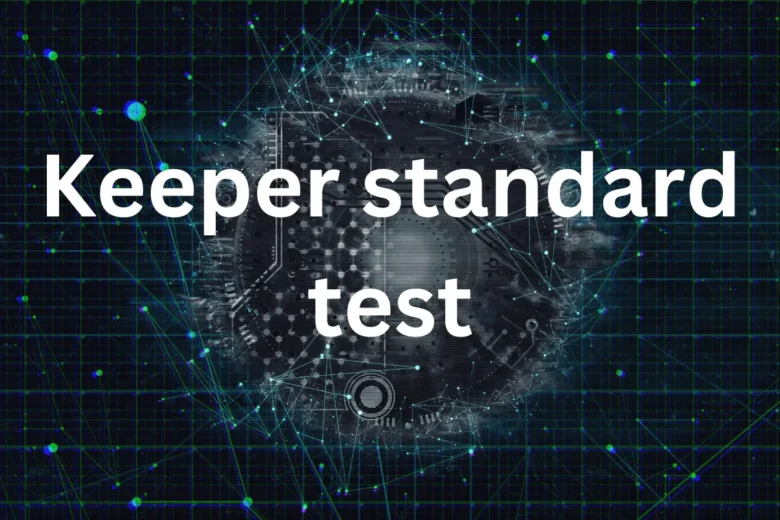What is the Keeper Standard Test?
The Keeper Standard Test is a specialized assessment designed to evaluate the skills and abilities of goalkeepers across various sports, particularly soccer, hockey, and handball. This test serves multiple purposes, primarily focusing on measuring a goalkeeper’s performance, reliability, and capability in high-pressure situations. The evaluation criteria incorporate essential skills such as shot-stopping, positioning, decision-making, and distribution, which are vital for a goalkeeper’s success on the field.
Originating from the need for standardized performance metrics, the Keeper Standard Test has evolved into a structured assessment tool. Various governing bodies and sports organizations, including FIFA and national football federations, endorse the test to ensure uniformity and credibility in the evaluation process. By establishing a standard, these organizations aim to promote higher levels of goalkeeping talent across the board, thus enhancing the overall quality of the sport.
The basic principles behind the test hinge on a set of standardized drills and scenarios that simulate real-game conditions. These exercises not only assess the goalkeeper’s technical abilities but also evaluate their psychological resilience when faced with challenging situations. By employing a robust set of criteria, coaches and scouts can effectively determine a player’s readiness and suitability for competitive play.
The Keeper Standard Test is widely utilized in various leagues and levels of competition. From youth academies to professional clubs, this assessment tool plays a crucial role in identifying and nurturing goalkeeping talent. It provides coaches with critical insights into each player’s strengths and weaknesses, enabling tailored training programs and strategic player development. Overall, the Keeper Standard Test is instrumental in elevating goalkeeping standards within the sporting community.
Key Components of the Keeper Standard Test
The Keeper Standard Test is a comprehensive evaluation that focuses on critical skills and abilities necessary for effective goalkeeping. This assessment is designed to analyze a wide range of components that contribute to a goalkeeper’s performance on the pitch. Among these components, shot-stopping is paramount; it assesses a goalkeeper’s ability to prevent the ball from entering the net through their reflexes, positioning, and overall agility. The test includes various scenarios that replicate real-match situations, allowing for an accurate reflection of a goalkeeper’s capabilities.
Another important component of the Keeper Standard Test is distribution. This aspect evaluates how well a goalkeeper can initiate counter-attacks or maintain possession through accurate throws or kicks. The ability to effectively distribute the ball enhances a team’s transition from defense to offense, making this skill crucial in modern football. The distribution segment measures both short and long-range distribution skills, ensuring that the goalkeeper exhibits proficiency in delivering the ball under varying circumstances.
Decision-making is also a vital skill assessed in the Keeper Standard Test. Goalkeepers often face split-second decisions, such as whether to rush off their line to intercept a ball or remain in position. The test evaluates a goalkeeper’s cognitive abilities, assessing their judgment in high-pressure situations which directly affects the outcome of matches. Additionally, positioning is crucial in goalkeeping; this test component analyzes how well a goalkeeper can anticipate plays and position themselves optimally to make crucial saves.
The Keeper Standard Test utilizes specific criteria to assess performance in these areas. Each component is graded meticulously, leading to a comprehensive understanding of a goalkeeper’s strengths and weaknesses. Collectively, these skills—shot-stopping, distribution, decision-making, and positioning—represent the foundation of effective goalkeeping and define an individual’s overall performance on the field.

Benefits of the Keeper Standard Test for Goalkeepers
The Keeper Standard Test offers an array of benefits for goalkeepers at all performance levels, from youth players to professional athletes. Primarily, one of the significant advantages of engaging in this test is the opportunity for goalkeepers to gain a comprehensive understanding of their strengths and weaknesses. By undergoing the streamlined evaluations included in the Keeper Standard Test, participants can discern specific areas of their skills that require improvement, thereby facilitating targeted training and development.
In addition to skill identification, the Keeper Standard Test plays a pivotal role in enhancing a goalkeeper’s overall game performance. Through systematic practice and feedback derived from the test results, goalkeepers gain valuable insights into their technique, reflexes, positioning, and decision-making. Consequently, this focused approach helps to sharpen their on-field execution during competitive games and training sessions.
Furthermore, the Keeper Standard Test serves as a beneficial benchmarking tool for coaches and teams aiming to assess player development systematically. By utilizing standardized measures, coaches can track a goalkeeper’s progress over time, ensuring that training regimens are effective and tailored to each player’s needs. This objective data facilitates more informed discussions about talent identification and development pathways, allowing coaches to develop strategies that maximize individual and team performance.
Moreover, the Keeper Standard Test contributes to a shared linguistic and evaluative framework among goalkeepers, coaches, and sports organizations. This alignment not only fosters healthy competition but also encourages goalkeepers to set measurable goals, inspiring them to reach new heights in their performance. Ultimately, the Keeper Standard Test is a valuable investment in a goalkeeper’s future, nurturing skill enhancement and fostering professional development while reinforcing the significance of continuous improvement in the sport.
How to Prepare for the Keeper Standard Test
Preparing for the Keeper Standard Test requires a multifaceted approach that encompasses physical training, skill development, and mental conditioning. Firstly, goalkeepers should engage in specific drills that target the skills evaluated during the test. Drills such as shot-stopping exercises, diving techniques, and distribution practice are essential. For instance, practicing one-on-one situations and reaction time drills can greatly enhance a keeper’s effectiveness in real-game scenarios, thus improving performance on the test. Setting up a training schedule that incorporates these drills consistently is crucial.
In addition to skill-based exercises, physical fitness cannot be overlooked. Goalkeepers should focus on building core strength, agility, and endurance through targeted workouts. Exercises such as plyometrics, interval training, and strength conditioning will contribute to overall fitness and enable goalkeepers to execute skills more effectively during the Keeper Standard Test. Incorporating exercises such as box jumps, ladder drills, and resistance training can significantly improve performance by enhancing power and speed.
Mental preparation is equally important. Visualization techniques, where goalkeepers imagine themselves succeeding in various scenarios, can boost confidence and reduce anxiety on test day. Additionally, practicing mindfulness and relaxation techniques, such as deep breathing exercises, will help keep nerves at bay. It’s beneficial for keepers to engage in routine mental rehearsal of the test conditions to become desensitized to the pressure and enhance focus.
Lastly, recovery strategies should not be neglected in the lead-up to the test. Adequate rest, hydration, and nutrition play vital roles in physical readiness. On the day before the Keeper Standard Test, goalkeepers should prioritize sleep and consume balanced meals to ensure their bodies are primed for optimal performance. By combining these physical, skill-based, and mental strategies, goalkeepers can maximize their potential and approach the Keeper Standard Test with confidence.
